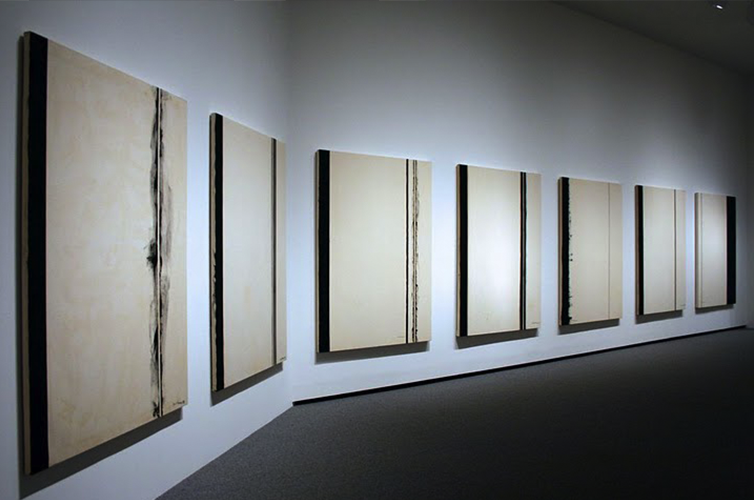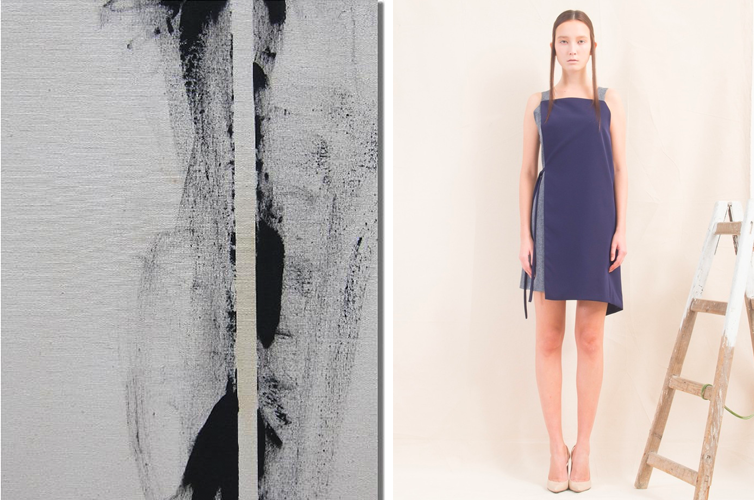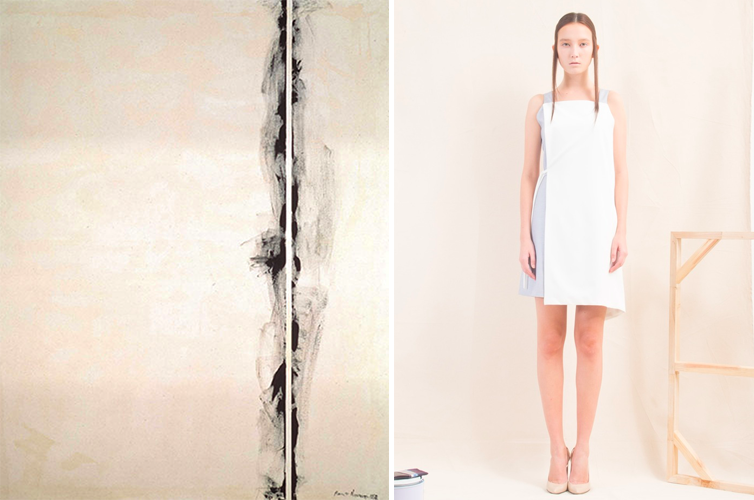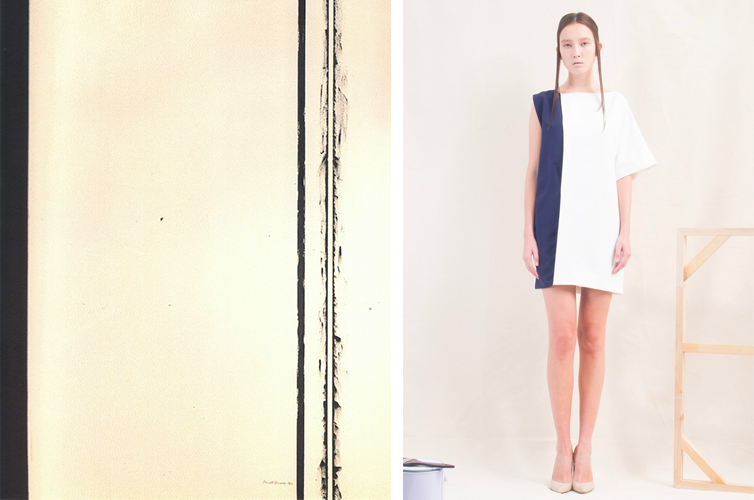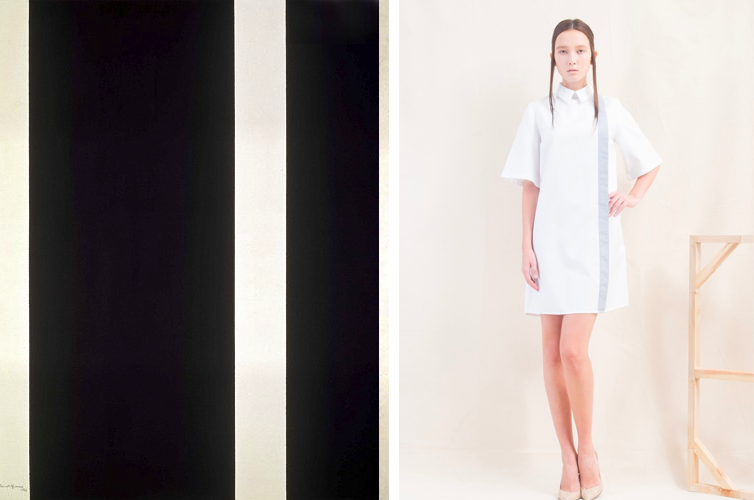Conceptual endeavors are, arguably, a fashion collection’s most important asset.
Aesthetics do sell, but so do stories, and Berayah’s newest SS16 collection, Stations, tells a narrative which surrounds humanity, emotions and art. Stations tackles the ideas of individuality and agony– the two aspects which are shared unanimously across humanity. I see this collection as being both sensitive and responsive, as the brand has successfully expressed their concept through the execution of their medium. I also think that their efforts in evoking introspection and self-awareness in users and viewers like myself, is highly praiseworthy.
Berayah’s Stations is a collection inspired by the existential works of American artist Barnett Newman, namely his series– “The Stations of the Cross: Lema Sabachtani”. This collection of abstract expressionist work exposes the artist’s personal hardships. Berayah’s Stations collection is able to connect with Newman’s series of paintings creatively; aesthetically; and theoretically, in an ever so intricate and wholesome manner, because it also focuses on the highlighted idea of individuality, and namely, the emotion of agony.
“[Agony] is an experience that is shared amongst you and I, regardless of the different paths we traverse”, Enoch Ho, founder of Berayah states, “We hope to bring an empathy, an understanding, and ultimately a healing to our pains”. Ho’s vision of individuality stems from the tendency of self-reflection and awareness. Every person possesses their own introspective journey, and this is what ultimately defines their individuality.
For Ho personally, this individualistic journey is traversed alongside God, which is why his brand name ‘Berayah’ is a transliteration of the Hebraic word “Beraiah”, meaning the phrase “God has created”. With biblical references and narratives, he aims to sculpt timeless pieces that doubles up as heartfelt conversations between the brand and its consumers. In The Stations of the Cross, this agony between the Divine Son and us humankind is also expressed, yet it is taken even further, acting not just as the sole narrative, but a subsurface idea leading into the deeper ideas of active experience and self-reflection.
Aesthetically, Barnett Newman’s rendering of individuality in The Stations of the Cross series is created with minimalist, vertical strokes. Newman calls these vertical marks “zips”, as its presence is an inference to crosses without their horizontal shafts (forward.com). This element is continued in Berayah’s Stations collection, as the brand has transformed these “zips” into pleats, seams and colour-blocked patterns. The fact that Newman’s works act as a physical muse for Berayah is pronounced – the simplicity and silence of Enoch Ho’s pieces follows the modest and chaste ambience of The Stations of the Cross.
There is a strong relationship between all of the paintings in The Stations of the Cross , and they are coupled with a sense of continuous reflection and thinking. The Stations of the Cross demands for the perceptual and emotional commitment of the audience. As they walk, stop, turn and contemplate, each individual is invited to undergo a personalized act of self-reflection. Individuality lies in one’s totality and separateness, and to Newman, this is the experience that he strives to provide through the series. Needless to say, this notion of individuality has long been a supporting pillar for fashion to flourish. It allows well-designed apparel to act as capsules for meaningful stories, and for original work to become additionally breathtaking and unique. This close proximity between art and fashion introduces new inspiration and stories, and this is ultimately what that allows for fashion to become an art form.
In my opinion, using individuality and agony as a bridging emotion between art, fashion, viewers, consumers and the respective values that both creators cherish dearly, is a strikingly raw but powerful feature.

